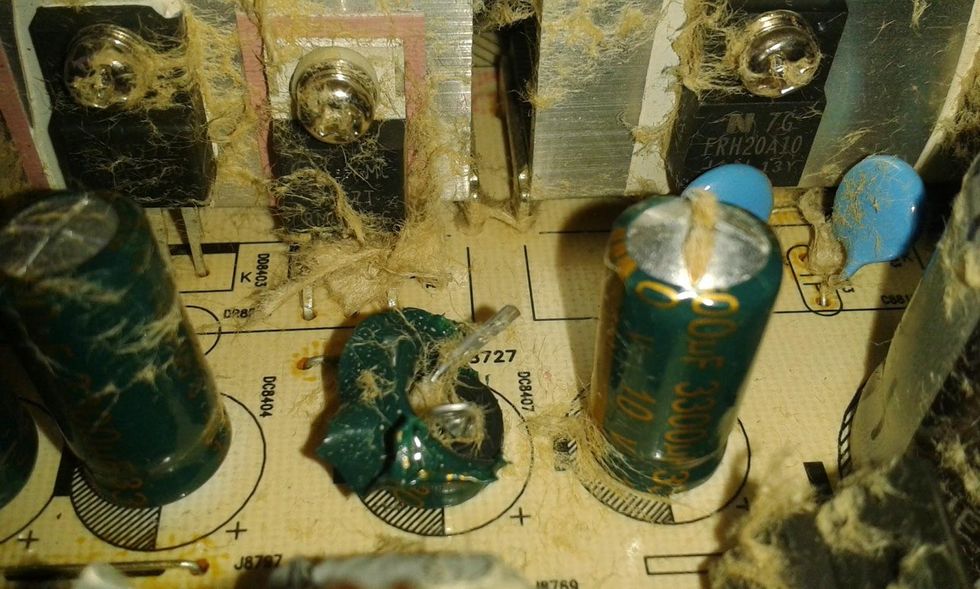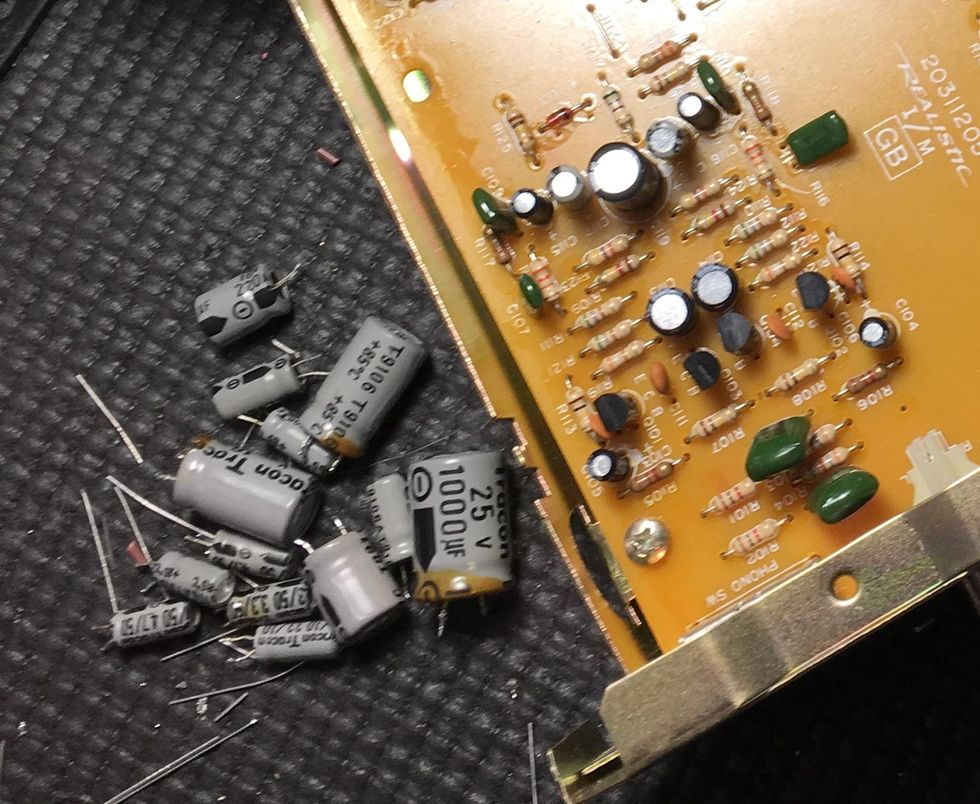Feeding clean power to guitar effects is really important. We do our best to buy the highest quality power supplies that we can find for our precious pedals. Once that clean power is fed into the unit from the wall outlet, it often goes through something called a power filter, inside the power supply. This ensures that the pedal’s power needs are being met, and allows each pedal to function properly. It also mostly gets rid of ripple.
Ripple (specifically ripple voltage) in electronics is the residual periodic variation of the DC, or direct current voltage, within a power supply using an AC, or alternating current, source, like the electrical outlets in your home or studio. If you’re curious, you can read all about DC versus AC current at electrical4u.com/dc-current.
Ripple is wasted power, and has many undesirable effects. It heats components, causes noise and distortion, and may cause digital circuits to operate improperly. Ripple can be reduced by adding the aforementioned electronic filter into the circuitry, to ensure that the pedal is getting the proper juice. There are parts called electrolytic capacitors that do a lot of the heavy lifting in this section of a circuit. You can learn more about capacitors at a variety of websites, including Wise-Geek.com, Techcircuit.org, Beavisaudio.com, and coda-effects.com, and you can see what they look like above.
Ripple is wasted power, and has many undesirable effects.
Those of us who love and cherish old amps know all about capacitors. The first thing I do when I acquire a gem from yesteryear is take it to a qualified amplifier technician to have it thoroughly inspected, and to have the power filter capacitors replaced with new ones. The reason for this is that over time these capacitors can dry out and cause the amp to not function properly, or to just simply stop working. In a worst case scenario, it can even cause electric shock.
When an electrolytic capacitor is going bad, it can appear to be deformed, sometimes bulging out at the ends. If the power filter capacitors—or really any of the electrolytics—look like this, it’s a sure sign that it’s time to take the amp to a tech for them to be replaced. In some cases, there might not be any visual indication at all when a cap goes bad. Most amp technicians I have dealt with say that a good rule of thumb is to replace these capacitors every seven years or so.
For reference, here’s what caps can look like when they’re blown:
The electrolytic capacitors in effects pedals also wear out over time. As in amps, caps in pedals are used for multiple purposes. Coupling capacitors let AC pass through them, but not DC. And RC (resistor-capacitor) filter caps cut off frequencies above or below a certain threshold. But the classic role is the one we’re discussing here: smoothing out ripples in the power supply. Capacitors have what is known as an “end of life cycle.” This means that the manufacturer only guarantees them to remain fully functional for a certain amount of time. That time frame can typically range anywhere from 1,000 to 5,000 hours.

There have been a few occasions when I have purchased a vintage pedal I had been trying to find for ages, only to get it plugged in and find it unusably noisy and/or dull-sounding. I usually re-cap these old circuits before I do anything else to them. This usually brings the pedal’s power back to its former glory, ensuring that the unit will behave as it was intended to for another decade or so. I would say nine times out of 10, replacing these capacitors creates a massive difference in clarity and sound. Take a look at one of my recapped circuit boards:

Keeping your pedals healthy internally is a great way to ensure that they will last lifetimes. Having them re-capped is one way to help maintain the integrity of the circuits inside. I am so glad I discovered this when I was early in my career as a pedal user and builder. It has certainly given a few of my formerly fallen soldiers a new lease on life.
